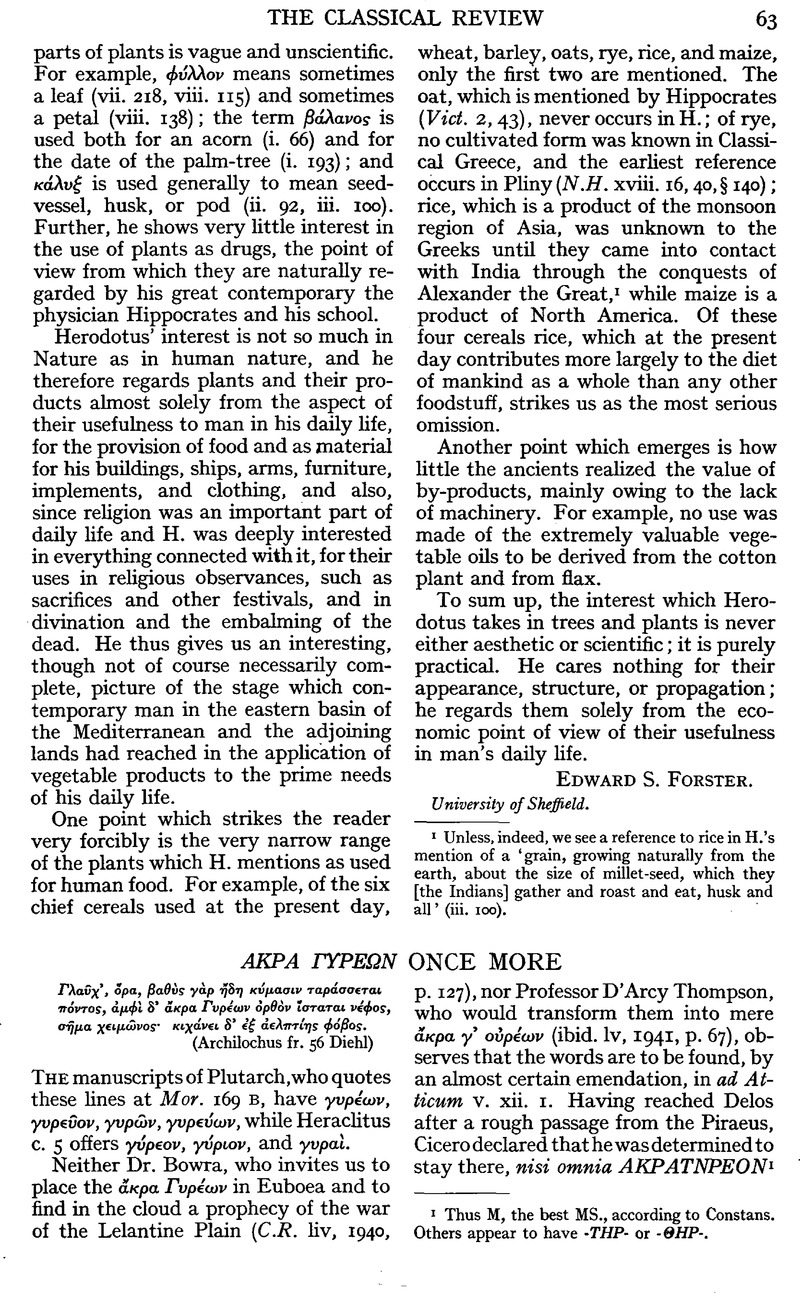No CrossRef data available.
Article contents
Akpa ΓυρεΩν Once More
Published online by Cambridge University Press: 27 October 2009
Abstract

- Type
- Review Article
- Information
- Copyright
- Copyright © The Classical Association 1942
References
page 63 note 1 Thus M, the best MS., according to Constans. Others appear to have -THP- or ΘΗΡ-.
page 64 note 1 So spelled in I.G. xii. 5. 872, 877. The name is abbreviated to ΓΥΡΑ in 873, 875.
page 64 note 2 Bürchner, R.E. s.v. ‘Gyras’, compares ![]() , etc.
, etc. ![]() in schol. Iliad N 66 may be a mistake for Γυραας. Venet. A has χοιρδας.
in schol. Iliad N 66 may be a mistake for Γυραας. Venet. A has χοιρδας.
page 64 note 3 How is this to be accented? Hesychius has it paroxytone, and Herodian μоν. λεξ. xvii. 29 declares that feminine nouns in νρα are never oxytone. He admits Γνρоσ Πέтρῃбσν, but says that the word is there an adjective.
page 64 note 1 I only know modem examples, but uncertainty between singular and plural occurs in place-names, e.g. ![]() .
.
page 64 note 2 I will not maintain that Homer placed his Γνρασ Πέтρασ in Tenos, but it seems that those who did so (Schol. min.—and perhaps also Tzetzes—on Lycophron 390, Philostratus Heroicus 9) had at any rate a similarity of names to go upon. Homer's story of how Poseidon set the shipwrecked Ajax safe on the ‘great’ Γνραί Πέтρασ, but angered by his lack of gratitude broke off and hurled away over the sea (καт Πνтоν) the crag on which he sat, looks like an aetiological story attached to a rock or reef in the sea near some mainland cliff from which it was thought to have been separated. The scholia on the passage of the Odyssey and Eustathius think that the rocks are near Myconos; perhaps, as is suggested by Ross, L., Reisen auf den griechischen Inseln, i. 20Google Scholar, originally the broken-off piece only was identified with some rock in the channel be tween Tenos and Myconos, which island boasted one of the graves of Ajax.
page 64 note 3 ‘An dem hohen Felsenkamme sammeln sich bei übrigens heiterem aber stürmischen Wetter Wolkendünste und bilden starken Nebel, aber nur so weit bis sie die hüochsten Kuppen verlassen, dann lösen sich die schnell darüber gejagten Dünste wieder auf zu klarer Luft. Zeigt Tschiknia ein umnebelt Haupt, so sucht der Schiffer einen Hafen zu erreichen, denn stärker und stärker wird der Sturm, bis Tschiknia klar wieder zum Himmel schaut.’


